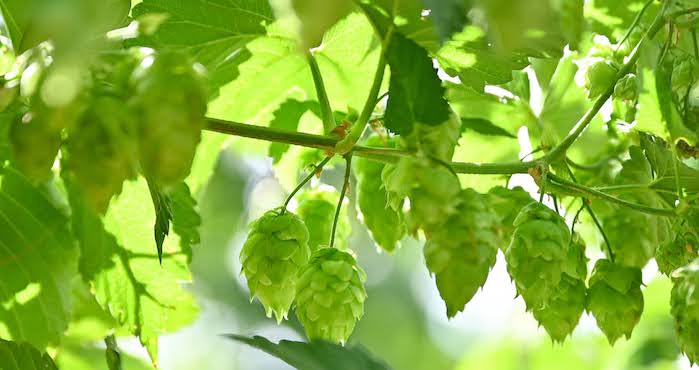Hop Science Newsletter (January 2015)
In this issue: the impact of harvest timing, alternatives to ICE-3, and all there is to know about isoalpha acids.

IS LATER HARVEST ALWAYS BETTER?…
IT DEPENDS…
The effect of date of harvest with Willamette and Cascade hops, already mentioned in the Newsletter March 2012, is now published in a comprehensive
article. In summary, with a later harvest the hop oil content increases and the composition changes in regard to single components such as α-pinene, ß-pinene, myrcene, limonene, methyl heptanoate, and linalool. These changes of course also affect the sensory profile of the hop oil. Although trials with Hallertau Mittelfrueh had shown that later picked hops led to a consumer preference with regard to dryhopped beers, this did not hold true for similar trials with Cascade hops. Like with everything in the world… it depends!.¹
ALTERNATIVES TO ICE-3
The current HPLC calibration standard for measuring alpha acids and beta acids in hops and hop products is the International Calibration Extract, third formulation (ICE-3), derived from a de-oiled CO2 hop extract. Laboratories that use ICE-3 must warm and mix the calibration extract to ensure that it is homogenous prior to use. As an alternative, this article offers a standard that uses the crystalline complexes of dicyclohexylaminealpha acids and dicyclohexylamine-beta acids which are more stable than ICE-3. Because these crystalline salts are homogeneous and readily dissolve in methanol, they are also easier to use than ICE-3.²
MAY I INTRODUCE:
Iso-korajol and 3 caryophyllene derivatives, i. e. 4S-dihydrocaryophyllene-5-one, 6(5→4)-abeo-8, 12-cyclocaryophyllan-5-al and 6(5→4)-abeocaryophyll- 8(13)-en-5-al
Don’t be worried if these substance names are new to you, because they have just been identified for the first time! A Belgian team investigated American kettle hopped lager beers for their hop derived volatile profiles. The scientific question is – how and which oxygenated sesquisterpenoids contribute to spicy and herbal flavours in kettle hopped beers? In this study, 63 compounds were detected in the chromatographic region where oxygenated sesquiterpenoids elute, of which 33 were identified as oxygenated sesquiterpenoids. In addition, the above mentioned iso-korajol and 3 caryophyllene derivatives were identified for the first time. GC-O sniffing analysis revealed a high number of flavour-active regions. α-Humulene-derived epoxides and both α-humulene and ß-caryophyllene derived alcohols were frequently detected in these flavour-active zones, which supports the general view regarding their importance in the hop aroma characteristics of kettle hopped lager beers. I admit, I believe in the sensory power of oxygenated sesquiterpenoids! Do you?³
ALL THERE IS TO KNOW ABOUT ISOALPHA ACIDS!
If you really want to know ALL there is to know about iso-alpha acids, this recently published review article will give you the full insight. There is actually no way to make this long story short, so if you are interested you have to read it. These are the topics covered: Formation of iso-alpha acids, stability of iso-alpha acids and reduced iso-alpha acids, degradation possibilities for iso-alpha acids (oxidative, non-oxidative), relation of iso-alpha acids to aging flavor formation and others…all there is to know about it!4
EVENTS
Happy Hoppy Day Freising: February 25th, 2015
Happy Hoppy Day featuring Bierkulturhaus, Salzburg: February 18th, 2015
In these events (in German), we will work with unique hop varieties and compositions. You will learn all you need to know about how to get hop flavour into your beer (including in situ dry hopping). We still have some places left, register now!
HOP VARIETY OF THE MONTH: ENIGMA™
Developed and cultivated through the Hop Products Australia in-house breeding program, Enigma™ is the newest flavour hop from Barth-Haas Group. With alpha values of 13,5-16,5 % and oil content of 2,4-3,0ml/100g hops, there is no need to hide! And the name says it all, be it peach-like flavours, raspberry or blackcurrant; be it the subtle resinous aroma you find in pomelos or the tastiness of grape juice, the complexity of the resulting flavor in your beer will be an enigma… More info here.



